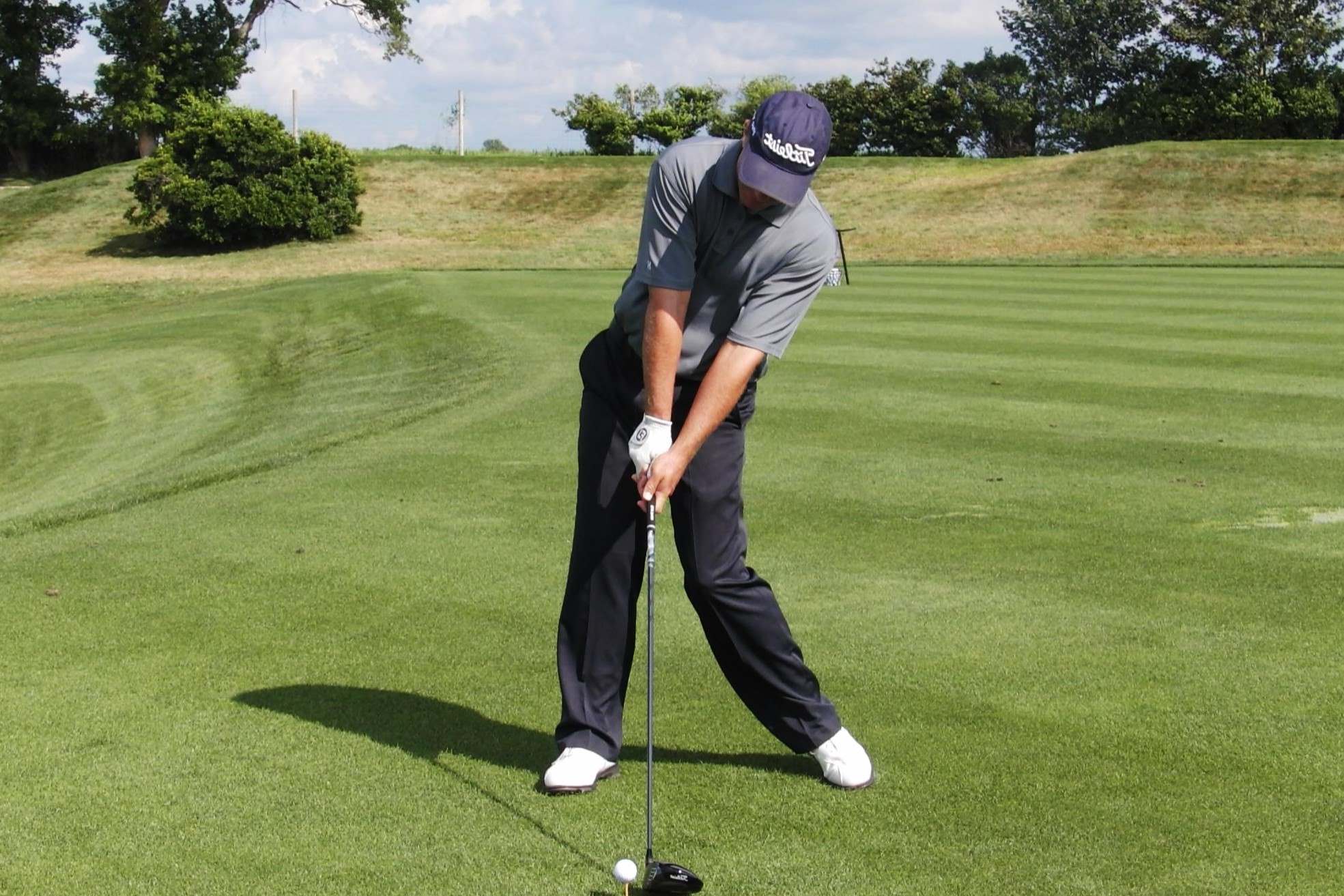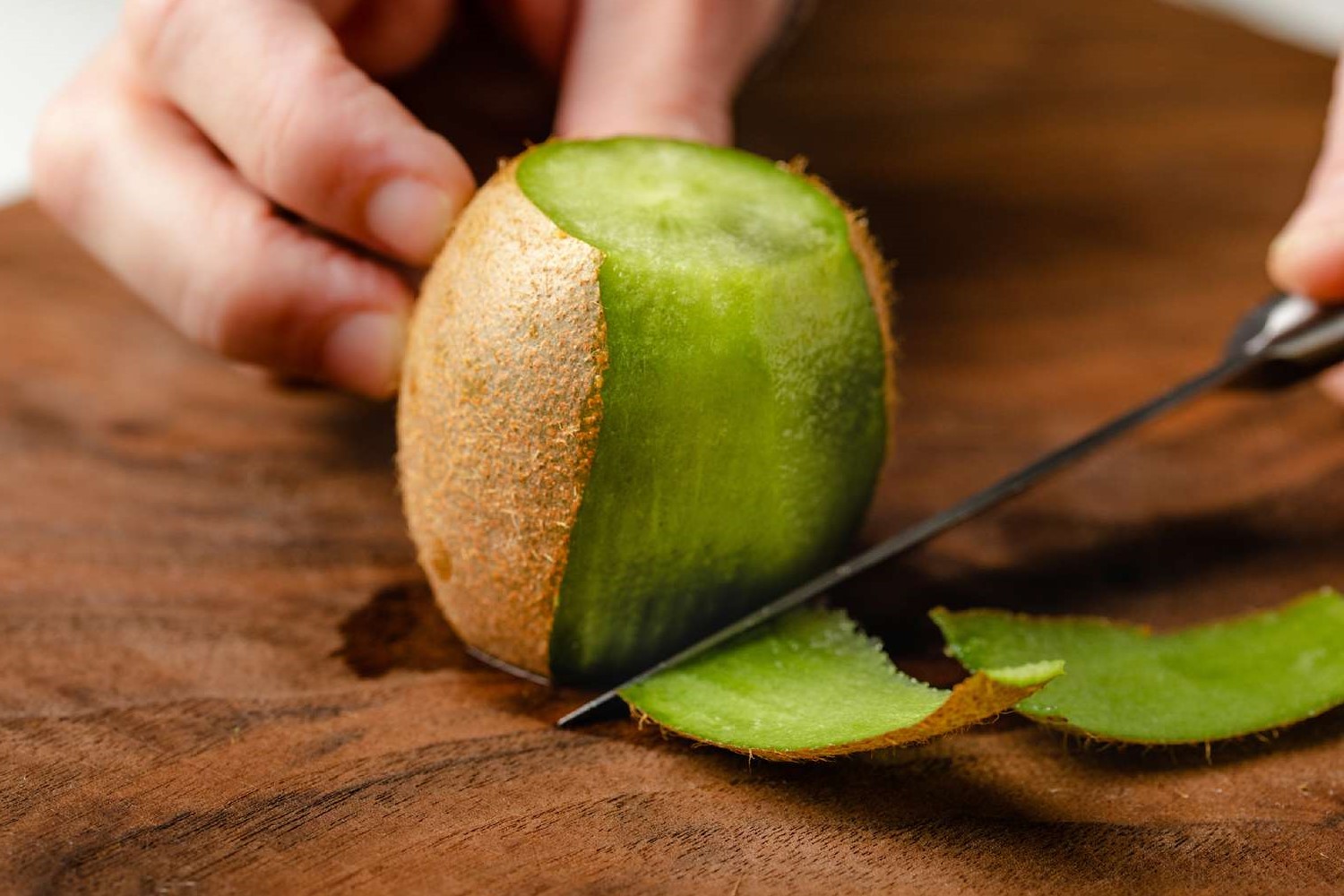

Sports
How To Hit A Driver
Published: February 26, 2024
Learn the best techniques for hitting a driver in sports. Improve your game with expert tips and strategies for driving success.
(Many of the links in this article redirect to a specific reviewed product. Your purchase of these products through affiliate links helps to generate commission for Noodls.com, at no extra cost. Learn more)
Table of Contents
Introduction
The driver, also known as the 1-wood, is one of the most crucial clubs in a golfer's arsenal. It is specifically designed to achieve maximum distance off the tee, making it an essential tool for setting up favorable positions on the fairway. Mastering the art of hitting a driver can significantly impact a player's overall performance on the course. Whether you're a seasoned golfer looking to refine your skills or a beginner eager to learn the fundamentals, understanding the nuances of hitting a driver is paramount.
In this comprehensive guide, we will delve into the intricacies of using a driver effectively. From the basic principles to advanced techniques, we will explore the key components that contribute to a successful drive. By dissecting the various elements involved in wielding this powerful club, you will gain valuable insights into optimizing your performance and elevating your game.
As we embark on this journey, it's important to approach the topic with an open mind and a willingness to absorb new knowledge. Whether you're aiming to crush the ball down the center of the fairway or seeking to refine your accuracy and distance, the principles of hitting a driver remain constant. By embracing the fundamentals and honing your skills, you can unlock the potential to drive the ball with precision and power, setting the stage for a fulfilling and rewarding golfing experience.
Join us as we unravel the secrets of mastering the driver, equipping you with the knowledge and techniques to elevate your game and conquer the challenges that await on the course. Let's tee off on this exhilarating journey toward harnessing the full potential of the driver and unleashing your prowess on the fairways.
Read more: How To Hit A Draw
Understanding the Basics of the Driver
The driver, often referred to as the 1-wood, is a golf club designed for one primary purpose: to propel the ball great distances off the tee. It boasts the largest clubhead among all the clubs in a golfer's bag, typically featuring a long shaft and a low loft angle, which contributes to its ability to generate substantial distance. Understanding the fundamental aspects of the driver is essential for any golfer aiming to master the art of long-range shots.
The clubhead of a driver is characterized by its size, which maximizes the sweet spot, the area on the clubface that yields optimal impact and distance. This design feature underscores the importance of precision and proper technique when using the driver. Additionally, the low loft of the driver, usually ranging from 8 to 12 degrees, imparts a lower trajectory to the ball, allowing it to travel farther upon impact.
The length of the driver's shaft sets it apart from other clubs, providing the potential for greater clubhead speed. However, this also necessitates a higher level of control and finesse to harness its power effectively. The grip of the driver is another critical element, as it directly influences the golfer's ability to maintain a steady and controlled swing throughout the entire motion.
Furthermore, the design of the driver's clubhead often incorporates advanced materials and technologies aimed at optimizing the transfer of energy from the club to the ball. This emphasis on maximizing energy transfer underscores the significance of striking the ball with precision and consistency, as even minor variations in impact can significantly affect the resulting distance and trajectory.
Understanding the basics of the driver involves recognizing its unique characteristics and the role they play in achieving long, accurate shots. By familiarizing oneself with the intricacies of the club, golfers can begin to appreciate the skill and technique required to wield the driver effectively, setting the stage for further exploration into the nuances of mastering this formidable club.
Proper Setup and Alignment
Proper setup and alignment form the bedrock of a successful drive with the driver. The way a golfer positions themselves and aligns the club directly impacts the trajectory, accuracy, and distance of the shot. Mastering the art of setting up and aligning oneself with precision is crucial for achieving consistent and powerful drives.
Addressing the Ball
The initial step in the setup process involves addressing the ball. The golfer should position the ball opposite their front heel, allowing for optimal contact with the center of the clubface. This alignment ensures that the clubhead makes contact with the ball at the ideal point, maximizing the transfer of energy and promoting a straighter, more controlled flight.
Stance and Posture
A balanced and stable stance is essential for a successful drive. The golfer should adopt a shoulder-width stance, distributing their weight evenly between both feet. The spine should be tilted slightly away from the target, promoting a sweeping motion through impact. Additionally, maintaining a relaxed posture with a slight knee flex facilitates a fluid and unrestricted swing, enhancing the potential for generating power and distance.
Alignment and Targeting
Aligning the body and clubface with the intended target is a critical aspect of the setup. The golfer should establish a clear target line and position their feet, hips, and shoulders parallel to this line. This alignment ensures that the clubface is square to the target, minimizing the likelihood of errant shots caused by misalignment. Furthermore, maintaining a consistent alignment across different shots fosters a sense of familiarity and confidence, contributing to improved performance on the course.
Grip and Club Position
The grip and position of the club play a pivotal role in setting the stage for a successful drive. A neutral grip, neither too strong nor too weak, promotes a natural release of the club through impact, optimizing the trajectory and accuracy of the shot. Additionally, positioning the clubhead behind the ball with the shaft leaning slightly away from the target sets the stage for a sweeping, upward strike, facilitating the desired launch angle and distance.
Visualization and Mental Preparation
Before executing the shot, visualizing the intended trajectory and outcome can enhance focus and confidence. By mentally rehearsing the desired flight path and envisioning a successful drive, golfers can cultivate a positive mindset and reinforce their commitment to the shot. This mental preparation complements the physical aspects of setup and alignment, contributing to a holistic and effective approach to driving the ball with the driver.
Mastering the intricacies of proper setup and alignment empowers golfers to approach each drive with confidence and precision. By honing these fundamental aspects of the setup process, golfers can lay the groundwork for consistent, powerful drives, setting the stage for enhanced performance and enjoyment on the course.
The Importance of a Smooth Swing
A smooth swing is the cornerstone of a successful drive with the driver. It encompasses a harmonious blend of rhythm, tempo, and sequencing, culminating in a fluid and controlled motion that optimizes the transfer of energy from the club to the ball. The significance of a smooth swing extends beyond mere aesthetics; it directly influences the trajectory, distance, and accuracy of the shot, making it a pivotal element in the golfer's quest for mastery.
The concept of a smooth swing revolves around the seamless coordination of various components, including the backswing, downswing, and follow-through. Achieving a fluid and unhurried backswing sets the stage for a well-executed downswing, allowing the golfer to harness the full potential of the club's power. The transition from backswing to downswing should unfold with a natural and unhurried rhythm, avoiding abrupt movements that can compromise the integrity of the swing.
Maintaining a smooth and controlled tempo throughout the swing is equally crucial. A consistent tempo fosters a sense of balance and stability, enabling the golfer to synchronize their body movements with the club's motion. This synchronization is instrumental in optimizing the clubhead's speed and path, factors that directly impact the resulting distance and trajectory of the shot.
Furthermore, the follow-through represents the culmination of the swing, serving as a visual testament to the fluidity and coordination exhibited throughout the motion. A well-executed follow-through reflects the golfer's ability to maintain a smooth and uninterrupted swing, showcasing their commitment to the shot and the seamless transfer of energy from the club to the ball.
Embracing the importance of a smooth swing entails a holistic approach to the driving process, emphasizing the interconnectedness of body mechanics, rhythm, and precision. By cultivating a smooth and controlled swing, golfers can unlock the full potential of the driver, harnessing its power to propel the ball with accuracy and distance.
In essence, the significance of a smooth swing extends far beyond the physical execution of the shot; it embodies the artistry and finesse inherent in the game of golf. By prioritizing the cultivation of a smooth swing, golfers can elevate their driving prowess, setting the stage for consistent, powerful drives that inspire confidence and elevate their performance on the course.
Generating Power and Distance
Generating substantial power and distance with the driver is a pursuit that lies at the heart of every golfer's aspirations. The ability to propel the ball with remarkable force and cover significant yardage off the tee represents a culmination of skill, technique, and physical prowess. Achieving this feat requires a comprehensive understanding of the factors that contribute to power generation and distance optimization, encompassing both the mechanical aspects of the swing and the strategic utilization of the driver's design features.
Leveraging Clubhead Speed
Clubhead speed serves as a primary determinant of the distance achieved with the driver. Maximizing clubhead speed involves a harmonious interplay of body mechanics, timing, and coordination. By initiating the downswing with a seamless transition from the backswing, golfers can unleash the full potential of the club's speed, propelling the ball with greater force and velocity upon impact. The rotational movement of the body, coupled with the controlled release of the club, amplifies the clubhead speed, translating into enhanced distance and trajectory.
Optimizing Launch Angle
The launch angle plays a pivotal role in determining the trajectory and carry distance of the ball. Achieving an optimal launch angle involves striking the ball with a slightly upward angle of attack, promoting a higher launch and prolonged carry. This technique leverages the low loft of the driver to impart a desirable trajectory, allowing the ball to soar through the air with minimal resistance and maximum distance. By mastering the art of optimizing the launch angle, golfers can harness the full potential of the driver's design, unlocking the key to achieving remarkable distance off the tee.
Harnessing Energy Transfer
Efficient energy transfer from the club to the ball is a fundamental aspect of generating power with the driver. Striking the ball at the sweet spot of the clubface facilitates optimal energy transfer, maximizing the ball speed and imparting greater distance. Additionally, maintaining a smooth and unhurried swing promotes a consistent transfer of energy, ensuring that the full force of the swing is effectively transmitted to the ball. By honing the precision and timing of their impact, golfers can amplify the energy transfer, culminating in powerful drives that leave an indelible mark on the fairway.
Embracing Technique and Precision
The art of generating power and distance with the driver transcends sheer physical strength; it embodies the finesse and precision inherent in the golfer's technique. Embracing a balanced and controlled swing, coupled with a keen focus on striking the ball with precision, enables golfers to optimize the transfer of energy and achieve remarkable distance. Furthermore, maintaining a stable and balanced posture throughout the swing fosters a seamless transfer of power, allowing golfers to unleash the full potential of the driver with finesse and accuracy.
In essence, the pursuit of power and distance with the driver encapsulates a harmonious blend of technique, timing, and strategic execution. By mastering the art of leveraging clubhead speed, optimizing launch angles, harnessing energy transfer, and embracing precision, golfers can elevate their driving prowess, unlocking the potential to achieve awe-inspiring distances and conquer the challenges that await on the course.
Common Mistakes to Avoid
Mastering the art of hitting a driver requires a keen awareness of the common pitfalls that can hinder a golfer's performance. By identifying and addressing these prevalent mistakes, golfers can refine their approach and elevate their driving prowess. Let's delve into the key mistakes to avoid when wielding the driver:
1. Overpowering the Swing
One of the most prevalent mistakes golfers make when using the driver is attempting to overpower the swing in a quest for maximum distance. This often leads to a loss of control and accuracy, resulting in erratic shots that veer off course. Instead of relying solely on brute force, golfers should prioritize a smooth and controlled swing, emphasizing rhythm and precision over sheer power.
2. Poor Alignment and Setup
Inadequate alignment and setup can significantly compromise the outcome of a drive. Misaligning the body and clubface with the target can lead to wayward shots and diminished distance. It is imperative for golfers to meticulously address the ball, establish a balanced stance, and align themselves with the intended target, setting the stage for a successful drive.
3. Neglecting the Sweet Spot
Failing to consistently strike the ball at the sweet spot of the clubface is a common mistake that undermines the potential for distance and accuracy. Impacting the ball away from the sweet spot diminishes the transfer of energy, resulting in suboptimal distance and trajectory. Golfers should strive to consistently target the sweet spot, maximizing the efficiency of their drives.
4. Ignoring Clubhead Speed and Tempo
Disregarding the importance of clubhead speed and tempo can impede a golfer's ability to achieve remarkable distance with the driver. A rushed or erratic swing can compromise the synchronization and fluidity necessary for generating power. By prioritizing a smooth and controlled tempo, golfers can optimize their clubhead speed, unlocking the potential for longer, more impactful drives.
5. Lack of Mental Preparation
Underestimating the significance of mental preparation can detract from a golfer's driving performance. Failing to visualize the intended trajectory and outcome of the shot can diminish focus and confidence. By cultivating a positive and focused mindset, golfers can enhance their readiness and commitment to executing a successful drive.
6. Neglecting Posture and Balance
Inadequate posture and balance during the setup and swing can compromise a golfer's ability to harness the full potential of the driver. Maintaining a stable and balanced stance, coupled with proper posture, is essential for executing a fluid and powerful swing. Neglecting these fundamental aspects can impede a golfer's ability to achieve consistent and impactful drives.
By recognizing and actively avoiding these common mistakes, golfers can refine their approach to using the driver, setting the stage for enhanced performance and a more fulfilling golfing experience. Embracing a holistic and mindful approach to driving can empower golfers to overcome these pitfalls, unlocking the potential to achieve remarkable distance and accuracy off the tee.
Conclusion
In conclusion, the art of hitting a driver encompasses a multifaceted journey that intertwines skill, technique, and a deep understanding of the club's dynamics. From the fundamental principles of setup and alignment to the pursuit of generating power and distance, mastering the driver is a pursuit that demands dedication, finesse, and a commitment to continuous improvement.
As golfers navigate the intricacies of wielding the driver, they embark on a quest that transcends mere physical execution; it embodies the essence of the game itself. The driver serves as a conduit through which golfers channel their aspirations, seeking to conquer the challenges of the course and leave an indelible mark on the fairways.
The culmination of a successful drive with the driver represents a harmonious fusion of artistry and precision, where the golfer's skill and the club's design converge to unleash the full potential of the shot. It is a testament to the golfer's ability to harness the forces at play, culminating in a symphony of motion that propels the ball with grace and power.
As golfers reflect on their journey toward mastering the driver, they are reminded of the enduring pursuit of excellence that defines the game of golf. Each drive with the driver presents an opportunity to embrace the nuances of the swing, the intricacies of setup, and the relentless pursuit of improvement.
Ultimately, the mastery of the driver transcends the tangible outcomes of distance and accuracy; it embodies the spirit of the game itself. It is a testament to the golfer's unwavering commitment to honing their craft, embracing the challenges that lie ahead, and savoring the exhilarating moments that unfold on the course.
As golfers carry the insights gleaned from this guide onto the fairways, they embark on a journey marked by resilience, determination, and an unyielding passion for the game. The driver, with its potential for awe-inspiring drives and unforgettable moments, stands as a symbol of the golfer's pursuit of mastery, encapsulating the essence of the game and the enduring allure of the sport.
In the end, the mastery of the driver is not merely a destination; it is a continuous odyssey, a perpetual quest for refinement and excellence. It is a journey that unfolds with each swing, each drive, and each moment on the course, shaping the golfer's experience and perpetuating the timeless allure of the game of golf.










